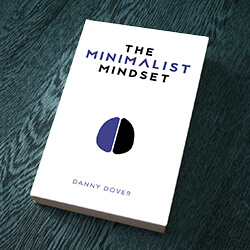Happiness is a huge pain. Everyone wants more of it but few know how to actively work to gain it. There are a lot of short terms actions you can take to have it (vacations, money, ice cream, etc.) but how are you supposed to sustain a high level of happiness?
This is a hard problem. In fact, sustaining happiness may even be the hardest problem people face. So how do you start to solve this problem? For me, the first step was to audit my current level of happiness and then adjusting accordingly.
What is a Happiness Audit?
A happiness audit is a personalized mental tool for measuring your happiness. It requires asking yourself questions about how your current day-to-day actions are aligned with what makes you happy.
The content of the audit will be different for every person but the format will be the same.
Example Happiness Audit:
Every fourth Sunday, I take five minutes out of my day to ask myself the following questions. If my answer to any of these is no for too many weeks in a row, I know I am going in the wrong direction to meet my happiness goals. In that way, these five minutes become some of the most important time I spend every month.
- Is your work contributing to a greater good?
- Are your daily tasks making you a better entrepreneur?
- Are your daily tasks making you a better person?
- Are you inspiring others?
- Are you still making enough business connections, where making the connections outweigh the cons of working at your position?
- Are you making more money than you could at any other job that you could reasonably get?
- Are you working hours that leave time for personal growth?
- Are you able to make a name for yourself given your current position in the company? (Public facing position)
This Theory Is Nice But How Do I Actually Use This?
Simply asking these questions isn’t enough. You need to act on them. This is hard part.
I solve this by actually going over my happiness audit with my boss. We sit down in a conference room and together I walk through each question. (If you think your job is too corporate for this behavior, consider the fact that I started this processed when I worked at AT&T.) We then use the answers to these questions to influence which projects I take on and which ones I gracefully decline.
This means that my happiness audit actually dictates how I spend my working hours. Think about the importance of that. My happiness dictates my work, not the other way around. If I am unhappy for too long, I simply take on different projects.
What Happens If You Answer Is No For Too Long?
Think of your happiness audit like a personal compass. If your life is going south and you want to go north, it is time to make some difficult decisions. Changing direction isn’t easy but the times I have recalibrated, have ended up being the best decisions of my life.
Next Step:
Now is the perfect time to write your own happiness audit. Feel free to use mine as an example and customize it to your needs. You don’t have to get it perfect the first time, you can and should change it over time.
Once you have your first version, schedule out a time once a month to review it. It only takes five minutes and can change your life. Get started right now, happiness awaits :-)








